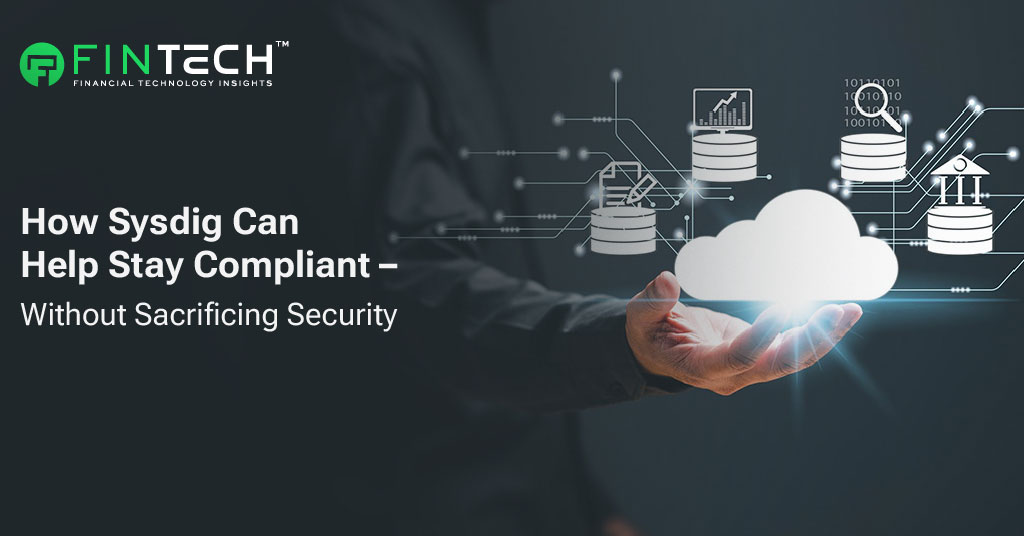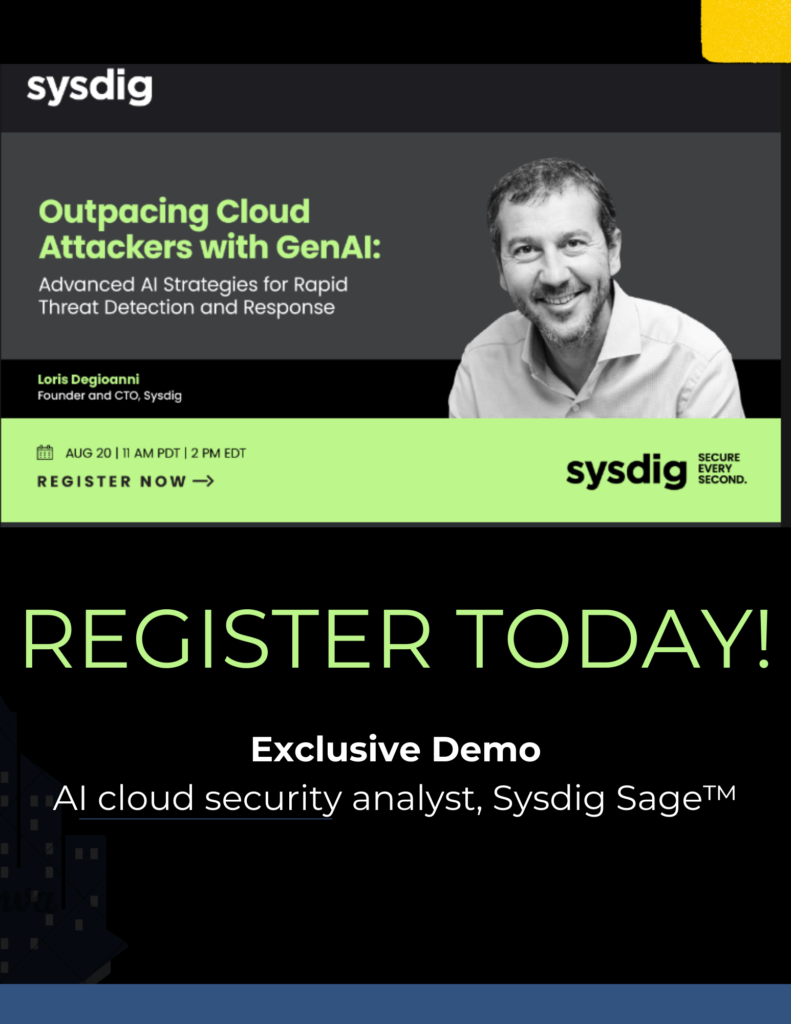Strategies for Financial Services To Prosper in Risky Times
Financial services organizations are at an unprecedented level of risk. They must adhere to governmental regulations and technical requirements while safeguarding the privacy and money of their customers. Security teams are already under pressure to accomplish more with fewer resources, and adhering to all of those requirements presents a significant, ongoing challenge. At some point, every industry has been affected by cybercrime, which is still on the rise. It is unsurprising that financial organizations have presented an appealing target.In 2021–2022, ransomware attacks alone impacted 74% of global financial institutions, and the average cost of a data exposure in the sector was $5.72 million.
Financial details are highly valued and provide even novice hackers with the opportunity to earn a quick buck. For example, credit card numbers can be readily sold for $30 each. Sysdig’s most recent research indicates that 65% of cloud assaults currently target financial services companies and telcos, as attackers are increasingly exploiting vulnerabilities in cloud security architectures to obtain such valuable information. An insecure configuration that is concealed within a cloud architecture can cause significant damage, enabling hackers to exploit the vulnerability.
Read Latest :Top 5 Reasons Why Sysdig Is Used by Goldman Sachs
Sysdig Assists Financial Services Organizations in Securing and Accelerating Innovation in the Cloud
Providing FinServ organizations with a unified view of risk, Sysdig offers cloud and container security solutions that enable them to prioritize risk and address issues at their source, thereby guaranteeing both compliance and security. Sysdig enables banks to remain competitive without exposing themselves to cyber threats by utilizing cloud services. Sysdig provides cloud and container security to enable financial services organizations that are transitioning to the cloud or already operating in the cloud to efficiently manage their security posture and prevent attacks without wasting time.
Read: Fintech Marketing: Top 10 Power Strategies to Accelerate Growth
Financial Services Organizations Are Encountering an Increasing Challenge in Managing Compliance
They are now required to monitor an unprecedented number of standards and regulations, some of which are optional, some of which are mandatory, some of which are region-specific, and many of which overlap. There are technical standards, such as those from NIST and ISO, data security standards like PCI-DSS, and governmental regulations, such as GDPR, SOC, and GLBA.It is a virtual alphabet jumble of rules and regulations. In order to comply with these standards and regulations, financial services organizations must have the necessary controls, testing, and reporting capabilities.
Financial services organizations must, of course, continue to evaluate their security requirements. In order to mitigate risk and safeguard against evolving threats, banks, which are among the most heavily regulated industries globally, must implement security measures that are designed for cloud-native environments. In order to fully capitalize on the advantages of the cloud, banks must prioritize vulnerabilities, detect threats in real-time, identify misconfigurations, audit activity, and measure compliance with regulations.
Top 5 Ways How Sysdig Can Help To Stay Compliant Without Sacrificing Security
1. CNAPP provides comprehensive coverage for security and compliance purposes
Cloud Native Application Protection Platforms (CNAPPs) combine functionality for Cloud Security Posture Management (CSPM), Cloud Workload Protection (CWP), Cloud Infrastructure Entitlement Management (CIEM), and Cloud Detection and Response (CDR) security into one security platform. These integrated capabilities allow DevOps to ship applications fast without security becoming a bottleneck while also allowing security teams to manage risk and defend against attacks.
The Sysdig CNAPP platform assists institutions that are investing in cloud and cloud-native applications in ensuring compliance and preventing, detecting, and stopping cloud threats. The compliance and security requirements of a heavily regulated industry cannot be met by a succession of point solutions that must be meticulously integrated. They offer an excessive number of opportunities for intrusions and for vital alerts to be overlooked. A cloud-native application protection platform (CNAPP) is the solution. A CNAPP can provide you with significantly improved visibility and control over your entire cloud-native application architecture. A feedback loop which facilitates true end-to-end coverage of the cloud-native application lifecycle is provided by a CNAPP.
A CNAPP provides comprehensive coverage for security and compliance purposes. The interrelationships between the insights of various security points-of-view and across use cases are revealed by a CNAPP solution, which promotes collaboration between DevSecOps, DevOps, and cloud security operations teams. When it comes to incorporating common workflows, data correlations, meaningful insights, and remediation, it can be the mediator with respect to providing real-time knowledge of your cloud environment. Implementing a CNAPP can enhance the security of your cloud infrastructure and cloud-native application architecture in all significant areas. Additionally, by integrating CNAPP security from the initial phases of the development process through production, you can guarantee that the final product will uphold the highest standards of security and compliance integrity.
2. Cloud detection and response

- Financial services organizations can more easily and confidently respond to threats targeting workloads, cloud services, and identities as a result of multilayered threat detection, which consolidates Falco-based policies and Machine Learning (ML) detections.
- Sysdig’s customizable detection rules are constructed on the industry-leading Falco engine, which provides real-time detection capabilities for Linux and Windows servers, containers and Kubernetes, cloud logs and traces, and Serverless (FaaS).
- Sysdig reduces the time required for incident analysis to five minutes by offering a comprehensive, automated context for events and a comprehensive view of the entire attack kill chain, with unparalleled coverage for cloud services, identities, and workloads, regardless of their operating environment.
- In order to identify compromised identities and prevent assaults at the initial indication of privilege escalation and account compromise, Sysdig correlates identity activity patterns with workload exploits.
3. Identify, Prioritize, and Remediate Misconfigs at Cloud Speed
- Sysdig provides financial services organizations with integrated compliance tools to evaluate their security posture. Misconfigurations can be effortlessly identified and rectified by teams, thereby guaranteeing that they adhere to industry standards.
- Sysdig surpasses conventional CSPM solutions by providing runtime insights. Leverage the power of real-time context to seamlessly triage risks, improve the effectiveness of mitigation, and fortify your enterprise security strategy and posture. Reveal concealed assault pathways. Visualize risks and exploitable connections across resources by correlating assets with activity.
- Real-time detections reveal active lateral movement with runtime insights, enabling you to halt assailants in their tracks. Search for compromised resources by integrating a variety of findings (e.g., “Identify all storage buckets that are publicly accessible via the internet, have unrestricted public access, and violate PCI standards”) to promptly assess the likelihood of high-severity misconfigurations, compliance violations, and vulnerabilities.
4. Vulnerability management
- Financial services firms are provided with all the necessary resources to identify and prioritize vulnerabilities based on in-use risk exposure. They can expedite the process of achieving security and compliance by addressing genuine risk.
- Achieve the best of both environments. Simplify the process of setting up and maintaining a network by employing agentless host scanning to identify vulnerabilities. Prioritize vulnerabilities by utilizing runtime intelligence with an agent to reduce noise and save time.
- Do not continue to drown in a sea of vulnerability duties. Sysdig’s risk spotlight, which is powered by runtime insights, identifies the most critical vulnerabilities to address first and identifies in-use products with the highest risks.
- Threat actors can implement intricate attack chains in mere minutes, and in some cases, even less, as a result of automation and an ever-increasing level of sophistication. The risk factors are further exacerbated by the capacity to rapidly move laterally and chain together exploits in cloud environments, where a single intrusion could result in a business-critical compromise.
- Blue teams must swiftly visualize and comprehend risks, correlate those risks with real-time events, and identify critical paths that malicious actors may use to infiltrate their systems.
- Risk Prioritization and Attack Path Analysis is a potent solution that is specifically engineered to address these challenges and offer invaluable insights into cloud security.
5. Entitlement management
- Sysdig assists financial services organizations in establishing visibility into cloud identities and managing permissions to eradicate excess permissions and enforce least privilege. The cloud has significantly altered the structure and functionality of contemporary applications, IT infrastructures, and associated processes. Organizations in the financial services sector are effectively leveraging the cloud to attain unprecedented levels of agility.
- Cloud permissions that have been granted are not utilized in 98% of cases. Eliminate excessive entitlements by implementing access policies that are informed by real-time incident data and in-use permissions. Utilize cloud infrastructure entitlement management (CIEM) to enforce least privilege and gain visibility into cloud identities.
- Identify identities with excessive permissions and inactive users. Ensure that access policies are optimized to provide the appropriate level of privileges.
- One of the most prevalent causes of security failure is inadequate identity and access management (IAM). Sysdig’s CIEM optimizes permissions for overprivileged users by utilizing runtime insights.
- Utilize runtime insights to emphasize the most critical dangers. Identify the riskiest users and roles, as well as potentially compromised users.
- Uncover hidden attack paths and risks by connecting the connections between in-use vulnerabilities, permissions, and real-time detection.
Wrapping Up
Financial services organizations require a secure cloud-centric architecture and infrastructure to enhance visibility and control in order to fully leverage the agility and speed that the cloud provides. In order to achieve a harmonious balance between uptime and a rapid time-to-market, developers require security platforms and tools that are interoperable and constructed on open standards, allowing for customization to accommodate conformance. Developers are able to reduce the burden of alert fatigue, which allows them to spend more time developing secure products and less time resolving vulnerabilities.
We will be back with more exciting articles in the fintech domain!
Write to us for any suggestions.



